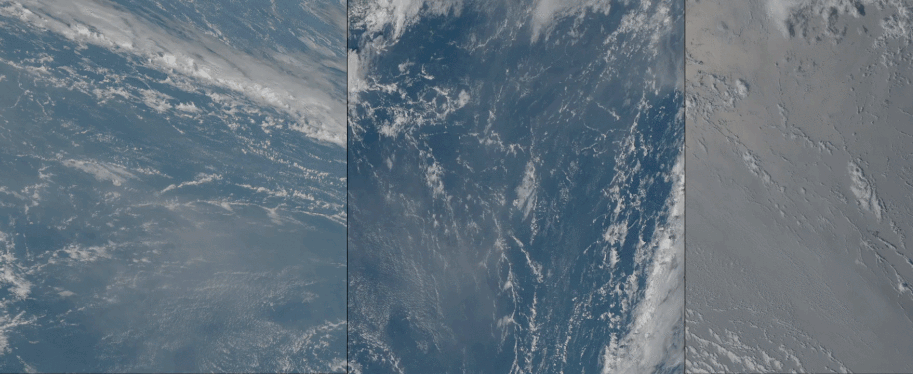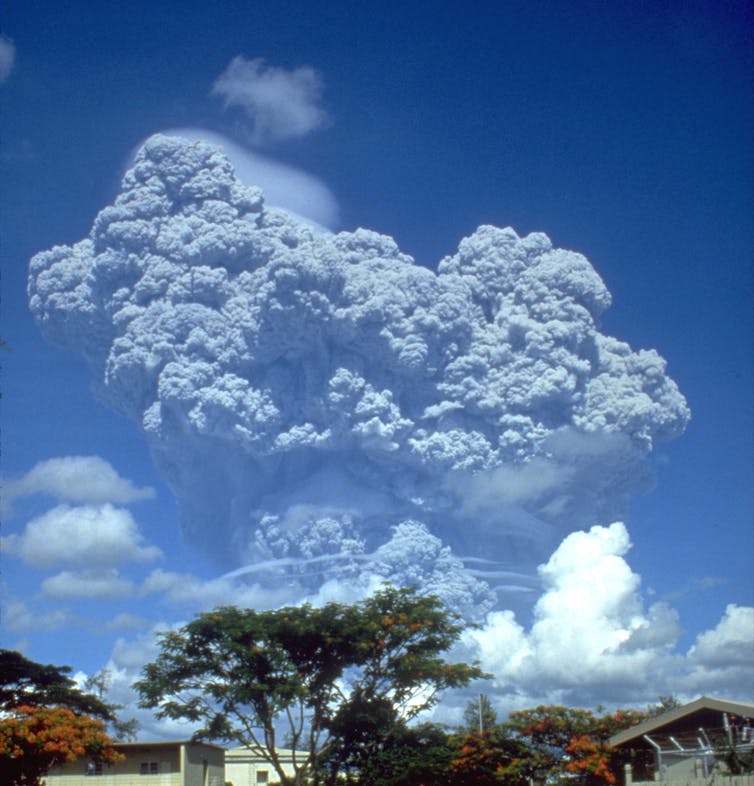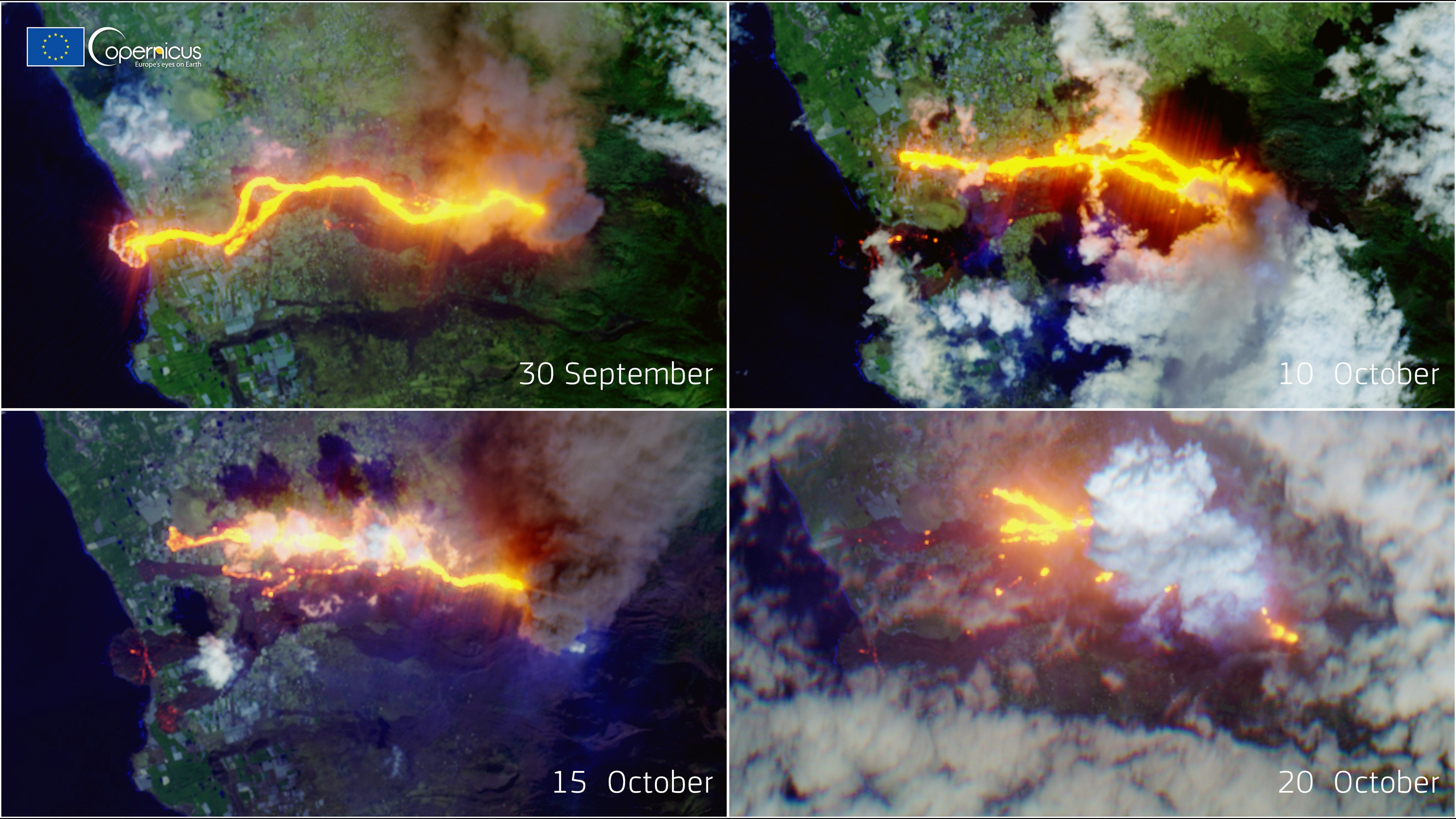what instruments do probes carry to check volcanoes
How satellites take revolutionized the study of volcanoes

Developments in satellite applied science over the past decade take allowed the world to witness the devastating Hunga Tonga-Hunga Ha'apai eruption and its backwash in real time and in unprecedented detail. The findings might shed calorie-free on the anatomy of rare explosive volcanic eruptions and their effects on the planet. But satellites are too helping volcanologists continue an eye on Earth's more than common (though less eye-communicable) outbursts.
The terminal time a volcano erupted as violently as Hunga Tonga-Hunga Ha'apai was 30 years ago. At that fourth dimension, satellites monitoring Earth were few and far between. Those watching the planet's surface were generally run by the military. The European Space Agency (ESA), now an Earth-observing super-power, was only near to launch its start Earth-observing mission, the Remote-Sensing Satellite-1 (ERS-1). Cubesats that have since become a cornerstone of commercial Earth-observing constellations, such those of the U.South.-based visitor Planet, were nevertheless to be invented.
Still, the eruption of Mount Pinatubo in 1991 was the most explosive volcanic event detected by satellites at that time, having been photographed by a Japanese weather satellite sitting 22,000 miles (36,000 kilometers) above Earth and a spacecraft of the U.Southward. National Oceanic and Atmospheric Organization that circled the planet in polar orbit.
Related: Ash from Tonga volcano eruption reaches record altitude but climate cooling unlikely
In existent time
Merely the detectors and cameras on satellites in the 1990s were nowhere most every bit capable every bit what flies effectually Earth today. And and so the amount of data was nowhere virtually as detailed to what the Hunga Tonga-Hunga Ha'apai eruption has produced.
"In a sense, nosotros are really lucky to accept all these satellites in orbit now," Simon Proud, a inquiry boyfriend in satellite data and meteorology at the University of Oxford, told Space.com. "This is something fifty-fifty five years ago we wouldn't take had."
Proud was one of the hundreds of researchers all over the earth captivated by the data pouring in from the orbiting sensor networks after the Hunga Tonga-Hunga Ha'apai eruption rippled through the southern Pacific Sea on Saturday (Jan. fifteen). Kickoff at that place was the nuclear-similar blast that has since been described as 500 times as powerful equally the Hiroshima flop. And then came the shockwave that circumnavigated the world, disruptive weather forecasting models all over, and the cloud of ash thrown so high up into the atmosphere that information technology has not been seen earlier.
That volcanic cloud was of detail interest to Proud. He has since institute that it reached tape altitudes of more 30 miles (50 km).
"Our latest data says that the main volcanic 'umbrella' reached 35 km [22 miles] altitude, merely some points may take reached 55 km [34 miles] distance!" Proud said on Twitter, calculation that the "shocking altitudes ... show just how violent this eruption was."
Nevertheless, he cautions that this tape is partly due to the availability of measuring technology.
"Nosotros think that Pinatubo probably got up that loftier too, but we missed it with the engineering we had," he said. "What is really interesting from a science perspective almost this event, is both just how high it went and over the coming days and weeks how it will interact with the atmosphere upwards there."
Scientists already know that the Hunga Tonga-Hunga Ha'apai volcanic cloud contained a relatively low amount of sulfur dioxide, compared to, for example, the Mount Pinatubo eruption. Sulfur dioxide is of great interest equally it can reflect sunlight when dispersed in the atmosphere, thus changing how much rut the planet traps. Because of its sulfur dioxide content, the Mountain Pinatubo eruption cooled down the planet past 1 degree Fahrenheit (0.6 degrees Celsius) in a way that was measurable for two years. Current estimates, however, suggest that despite its cataclysmic proportions, the Hunga Tonga-Hunga Ha'apai volcanic deject contained just ii% of the amount of sulfur dioxide of Mount Pinatubo.

Uncorked champagne bottle
The difference, all the same, is not due to the size or force of the blast, volcanologist Jeffrey Karson, of the Academy of Syracuse in New York, told Infinite.com.
"That has to do with the source of the molten stone at depth," Karson said. "Some volcanic material has a lot of sulphur, some has very depression sulphur. It depends on the source."
The force of the Hunga Tonga-Hunga Ha'apai blast, the greatest the planet witnessed since the 1991 eruption of Mount Pinatubo, was a result of a combination of factors, co-ordinate to Karson.
"At that place is nix geologically unusual about this volcano," Karson said. "It'southward one of thousands of volcanoes around the Pacific Rim, the so-chosen 'Ring of Burn down,' where the Pacific Bounding main is existence stuffed underneath the surrounding lithospheric plates. It'south a process that drives most volcanism on our planet."
The h2o mixing with the magma triggers chemical reactions that are non nowadays in volcanoes erupting on dry land. The water mixes with the molten rock, creating bubbling of gas The loftier temperature in the volcanic vent pressurizes the mixture like a canteen of champagne. At some point, the pressure is high enough to displace the "cork" on that volcanic champagne bottle. How long the volcanic "cork" stays in place and how ferociously information technology flies away depends on the column of h2o above, Karson said.
"If at that place'southward a lot of pressure on the organization, in other words, the water is relatively deep, so the lids are kept on that system and the gases leak out rather slowly," said Karson. "If information technology'southward close to the surface, at that place's no water pressure to hold the lid on the organization and those gases come out catastrophically."
The gas can aggrandize one thousand times in volume as information technology changes from the liquid form, said Karson; a process that happens instantly, blowing apart rock with explosive force.

Where will the next ane explode?
Satellites, Karson admits, played an indispensable role in monitoring the Hunga Tonga-Hunga Ha'apai eruption. Volcanologists place sensors on volcanoes they believe might go active. Merely there is still very little known virtually the processes inside World, and estimates are very crude at best.
"We don't know when the next eruption is going to take identify on a detail volcano, so we put instruments on the ones that we think are almost active," Karson said. "Simply this detail volcano was not instrumented very much at all."
Despite the technological boom of the past decade, satellites all the same don't provide such a detailed moving-picture show every bit ground-based sensors. Nonetheless, much can be learned from their data and images near the scale of the bear upon, the spread of the volcanic cloud and changes to the terrain around the volcano.
"There is a lot that can be washed," said Karson. "For instance, you might wonder how much the footing level changed, and that can be adamant from satellites as well these days. Only the gases, for example, get dispersed in the atmosphere and tin end up being diluted and difficult to measure out from those great heights.

Tiresome-burning destruction
Karson's primary research interests are the more modest, slow-burning volcanoes that throw upwardly lava over weeks and months, ofttimes causing astringent but more anticipated damage that people can set up for. Even those volcanoes benefit from satellite monitoring. For example, the damage caused by the Cumbre Vieja volcano on the Canarian island of La Palma in the Atlantic Body of water terminal year was assessed in detail almost on a daily footing by satellites of the European constellation Copernicus. Analysts could count individual buildings that vanished in the lava river and calculate the exact area of land buried by the molten rock.
"Nowadays it'due south pretty common even in incredibly remote areas to capture [volcanic eruptions] with satellites," Karson said. "There'southward more and more satellites all the time now. They have different systems on them and so we are much better positioned to make different kinds of observations."
Keeping an middle on the deject
The scale of the touch of a volcanic eruption may not necessarily be directly proportional to its ferocity, Karson added.
For example, the deadening-burning 2010 eruption of the Eyjafjallajökull volcano in Iceland produced huge amounts of ash that was extremely dangerous to aircraft. Almost 100,000 flights had to exist grounded on busy cross-Atlantic routes equally a event of the eruption.
Hunga Tonga-Hunga Ha'apai, on the other hand, threw upwards its debris in a rather remote surface area of the Pacific Sea that not that many flights cross. Scientists, however, nevertheless advisedly monitor the spread of the cloud, which has since crossed Australia and has started spreading over the Indian Ocean.
"The ash cloud will eventually spread very thinly globally," said Proud. "Over the side by side few weeks it will probably remain in the Southern Hemisphere, post-obit the winds across the southern Indian Ocean and towards the southern role of Africa."
For now, virtually of the cloud is way to a higher place the cruising altitude of aircraft, he added. Even though the explosion is over, satellites will keep their eyes peeled on Hunga Tonga as well as the volcanic cloud for weeks to come. Proud said some unexpected insights might come out of the research. For instance, due to its altitude, the volcanic ash might interact with the ozone layer, something that has never been studied before.
Follow Tereza Pultarova on Twitter @TerezaPultarova . Follow us on Twitter @Spacedotcom and on Facebook .
Join our Space Forums to keep talking infinite on the latest missions, night sky and more! And if you have a news tip, correction or comment, let us know at: community@space.com.
Source: https://www.space.com/how-satellites-revolutionized-study-of-volcanoes
Post a Comment for "what instruments do probes carry to check volcanoes"